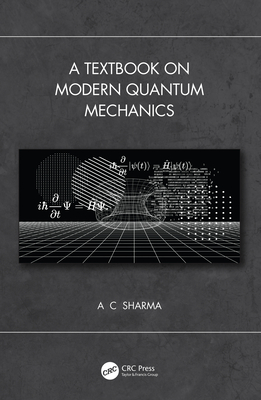Introduction to Quantum Mechanics with Applications to Chemistry (Paperback)
暫譯: 量子力學導論及其在化學中的應用(平裝本)
Linus Pauling, E. Bright Wilson Jr.
- 出版商: Dover Publications
- 出版日期: 1985-03-01
- 售價: $960
- 貴賓價: 9.5 折 $912
- 語言: 英文
- 頁數: 496
- 裝訂: Paperback
- ISBN: 0486648710
- ISBN-13: 9780486648712
-
相關分類:
化學 Chemistry、量子 Quantum
海外代購書籍(需單獨結帳)
買這商品的人也買了...
-
 Quantum Field Theory in a Nutshell, 2/e (Hardcover)
Quantum Field Theory in a Nutshell, 2/e (Hardcover)$1,380$1,352 -
 Condensed Matter Field Theory, 2/e (Hardcover)
Condensed Matter Field Theory, 2/e (Hardcover)$3,810$3,620 -
 Quantum Mechanics and Path Integrals: Emended Edition (Paperback)
Quantum Mechanics and Path Integrals: Emended Edition (Paperback)$830$813 -
 $1,617Computational Fluid Mechanics and Heat Transfer, 3/e (Hardcover)
$1,617Computational Fluid Mechanics and Heat Transfer, 3/e (Hardcover) -
 易讀程式之美學-提升程式碼可讀性的簡單法則 (The Art of Readable Code)
易讀程式之美學-提升程式碼可讀性的簡單法則 (The Art of Readable Code)$480$408 -
 $500Android C++ 高級編程-使用 NDK (Pro Android C++ with the NDK)
$500Android C++ 高級編程-使用 NDK (Pro Android C++ with the NDK) -
 $806Linux/UNIX 系統編程手冊(上下冊) (The Linux Programming Interface: A Linux and UNIX System Programming Handbook)
$806Linux/UNIX 系統編程手冊(上下冊) (The Linux Programming Interface: A Linux and UNIX System Programming Handbook) -
 $1,615Cracking the Coding Interview : 189 Programming Questions and Solutions, 6/e (Paperback)
$1,615Cracking the Coding Interview : 189 Programming Questions and Solutions, 6/e (Paperback) -
 Lectures on Quantum Mechanics, 2/e (Hardcover)
Lectures on Quantum Mechanics, 2/e (Hardcover)$1,260$1,235 -
 Field Theories of Condensed Matter Physics, 2/e (Hardcover)
Field Theories of Condensed Matter Physics, 2/e (Hardcover)$4,280$4,066 -
 Understanding Machine Learning: From Theory to Algorithms (Hardcover)
Understanding Machine Learning: From Theory to Algorithms (Hardcover)$2,600$2,470 -
 Holographic Duality in Condensed Matter Physics (Hardcover)
Holographic Duality in Condensed Matter Physics (Hardcover)$1,400$1,372 -
 Designing Data-Intensive Applications: The Big Ideas Behind Reliable, Scalable, and Maintainable Systems (Paperback)
Designing Data-Intensive Applications: The Big Ideas Behind Reliable, Scalable, and Maintainable Systems (Paperback)$2,090$1,980 -
 Modern General Relativity: Black Holes, Gravitational Waves, and Cosmology (Hardcover)
Modern General Relativity: Black Holes, Gravitational Waves, and Cosmology (Hardcover)$1,750$1,715 -
 C++ Primer, 5/e (繁體中文版)
C++ Primer, 5/e (繁體中文版)$990$782 -
 Crafting Interpreters (Paperback)
Crafting Interpreters (Paperback)$2,230$2,119
商品描述
When this classic text was first published in 1935, it fulfilled the goal of its authors "to produce a textbook of practical quantum mechanics for the chemist, the experimental physicist, and the beginning student of theoretical physics." Although many who are teachers today once worked with the book as students, the text is still as valuable for the same undergraduate audience.
Two-time Nobel Prize winner Linus Pauling, Research Professor at the Linus Pauling Institute of Science and Medicine, Palo Alto, California, and E. Bright Wilson, Jr., Professor Emeritus of Chemistry at Harvard University, provide a readily understandable study of "wave mechanics," discussing the Schrodinger wave equation and the problems which can be solved with it. Extensive knowledge of mathematics is not required, although the student must have a grasp of elementary mathematics through the calculus. Pauling and Wilson begin with a survey of classical mechanics, including Newton's equations of motion in the Lagrangian form, and then move on to the "old" quantum theory, developed through the work of Planck, Einstein and Bohr. This analysis leads to the heart of the book ― an explanation of quantum mechanics which, as Schrodinger formulated it, "involves the renunciation of the hope of describing in exact detail the behavior of a system." Physics had created a new realm in which classical, Newtonian certainties were replaced by probabilities ― a change which Heisenberg's uncertainty principle (described in this book) subsequently reinforced.
With clarity and precision, the authors guide the student from topic to topic, covering such subjects as the wave functions for the hydrogen atom, perturbation theory, the Pauli exclusion principle, the structure of simple and complex molecules, Van der Waals forces, and systems in thermodynamic equilibrium. To insure that the student can follow the mathematical derivations, Pauling and Wilson avoid the "temptation to condense the various discussions into shorter and perhaps more elegant forms" appropriate for a more advanced audience. Introduction to Quantum Mechanics is a perfect vehicle for demonstrating the practical application of quantum mechanics to a broad spectrum of chemical and physical problems.
商品描述(中文翻譯)
當這本經典著作於1935年首次出版時,它實現了作者的目標,即「為化學家、實驗物理學家和理論物理學的初學者製作一本實用的量子力學教科書。」儘管許多今天的教師曾經以學生身份使用過這本書,但該文本對於同樣的本科生讀者仍然具有重要價值。
兩次獲得諾貝爾獎的林納斯·鮑林(Linus Pauling),加州帕洛阿爾托的林納斯·鮑林科學與醫學研究所的研究教授,以及哈佛大學的化學名譽教授E. Bright Wilson, Jr.,提供了一個易於理解的「波動力學」研究,討論了薛丁格波動方程及其可解決的問題。雖然不需要廣泛的數學知識,但學生必須掌握從微積分到基礎數學的基本概念。鮑林和威爾遜首先對經典力學進行概述,包括牛頓運動方程的拉格朗日形式,然後轉向通過普朗克、愛因斯坦和波爾的工作發展起來的「舊」量子理論。這一分析引出了本書的核心——對量子力學的解釋,正如薛丁格所表述的,「涉及放棄精確描述系統行為的希望。」物理學創造了一個新的領域,在這裡,經典的牛頓確定性被概率所取代——這一變化隨後被海森堡的不確定性原理(在本書中描述)所強化。
作者以清晰和精確的方式引導學生從一個主題到另一個主題,涵蓋了氫原子的波函數、擾動理論、泡利排斥原理、簡單和複雜分子的結構、范德瓦爾斯力以及熱力學平衡中的系統等主題。為了確保學生能夠跟隨數學推導,鮑林和威爾遜避免了「將各種討論濃縮成更短且或許更優雅的形式」的誘惑,這些形式適合更高級的讀者。《量子力學導論》是展示量子力學在廣泛化學和物理問題中的實際應用的完美工具。






























